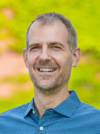Hermann Weyl as a Philosopher
Hermann Weyl (1885-1955) is considered to be one of the most important mathematicians of the twentieth century, and he is probably the most eminent one in the history of the ETH. This project considers his philosophical writings and tries to show the unity in his thinking. In particular, the setting for Weyl's references to Husserl and to German Idealism in the context of mathematics and physics are investigated. As it turns out, an important precondition for these were his academic surroundings; i.e. his student days in Göttingen and especially the intellectual "cross-fertilisation" at the ETH with the Fichte scholar Fritz Medicus between 1913 and 1930.
The project focusses on different topics in Weyl's and Medicus' philosophical and scientific works, considers them in relation to the tension between Husserlian phenomenology and the Fichtean "Wissenschaftslehre" (Doctrine of knowledge), and relates them to current philosophical debates. The main topics are the analysis of the mathematical continuum which originated from the "foundational crisis" in mathematics, the concept of matter in modern physics, symbolic constructions in science, and the constitutive relation between a community and an individual (concept of ego). All these issues are closely connected to concepts of a surrounding. For Weyl a point in topology is a limiting idea, constituted by means of neighborhoods (in the technical sense of "surroundings" in mathematics); and just as there are no points independent of their neighborhoods, there is no "inside of matter" independent of spatio-temporal neighbourhoods ("surroundings"), no single system-independent symbol in a formalism, and no individual human being independent of his or her social surrounding. Following Weyl and Medicus, points, matter, symbols, and humans are all constituted by surroundings.
Moreover, "surroundings" are also a constitutive part of the historiographical method of this project, which leans towards (a revised and adapted version of) "Konstellationsforschung". The unity between content and method, which is gained through the concept of a surrounding, is of central importance for this project, as it produces an intertwining of historical and systematic thinking, and thereby answers a demand produced by several of Weyl's and Medicus' own writings.
Publications:
N. Sieroka (2020): Weyl: Einstein in ordentlich. Interview in: Elmshorner Nachrichten, 15.04.2020.
N. Sieroka (2020): Unities of Knowledge and Being: Weyl's Late "Existentialism" and Heideggerian Phenomenology. In: Phenomenological Approaches to Physics (Synthese Library Series), ed. by H.A. Wiltsche und P. Berghofer. Springer-Verlag, Cham, pp. 107-122.
N. Sieroka (2019): Neighbourhoods and Intersubjectivity: Analogies between Weyl's Analyses of the Continuum and Transcendental-Phenomenological Theories of Subjectivity. In: Weyl and the Problem of Space: From Science to Philosophy (Studies in History and Philosophy of Science), ed. by J. Bernard und C. Lobo. Springer-Verlag, Cham, pp. 99-122.
N. Sieroka (2017): Schellingsches Natur- und Materieverständnis im und um das 20. Jahrhundert. In: Fichte und Schelling: Der Idealismus in der Diskussion, Bd.III (Acta des Brüsseler Kongresses 2009 der Internationalen J.G. Fichte-Gesellschaft), ed. by T. Grohmann, L. Held und J.-C. Lemaitre. EuroPhilosophie Éditions, 2017.
N. Sieroka (2015): Transzendentale Naturlehre im Zeitalter von Relativitätstheorie und Quantenmechanik. Neuinterpretationen von Raum, Zeit und Kausalität durch Cassirer, Medicus und Weyl. In: "Natur" in der Transzendentalphilosophie, ed. by H. Girndt. Duncker & Humblot, Berlin, pp. 431-446.
N. Sieroka (2015): Weyl's Abandonment of Unified Field Theory. In: Proceedings of the Thirteenth Marcel Grossmann Meeting on General Relativity, ed. by R.T. Jantzen, K. Rosquist und R. Ruffini. World Scientific, Singapur, pp. 2061-2063.
N. Sieroka (2013): A Post-Kantian Approach to the Constitution of Matter. In: Objectivity after Kant: Its Meaning, Its Limitations, Its Fateful Omissions, ed. by G. Van de Vijer and B. Demarest. Olms, Hildesheim, pp. 41-55.
N. Sieroka (2012): Hermann Weyl und Fritz Medicus: Die Zürcher Fichte-Interpretation in Mathematik und Physik um 1920. Fichte-Studien 36, pp. 129-143.
N. Sieroka (2010): Umgebungen. Symbolischer Konstruktivismus im Anschluss an Hermann Weyl und Fritz Medicus. Chronos Verlag, Zürich.
N. Sieroka (2010): Geometrization Versus Transcendent Matter: A Systematic Historiography of Theories of Matter Following Weyl. British Journal for the Philosophy of Science 61 (4), pp. 769-802.
N. Sieroka (2010): A Weylian Approach Towards Theories of Matter. In: EPSA Philosophical Issues in the Sciences, ed. by M. Suárez, M. Dorato, and M. Rèdei. Springer, Dordrecht, pp. 219-226.
N. Sieroka (2009): Husserlian and Fichtean Leanings: Weyl on Logicism, Intuitionism, and Formalism. Philosophia Scientiae 13 (2), pp. 85-96.
N. Sieroka (2009): Hermann Weyl - Philosophie der Mathematik und Naturwissenschaft. In: Kindlers Literaturlexikon, vol.17. Verlag J.B. Metzler, Stuttgart, pp. 361-362.
N. Sieroka (2008): Hermann Weyl (1885-1955). In: Handbook of Whiteheadian Process Thought, vol.2, ed. by M. Weber and W. Desmont. Ontos Verlag, Frankfurt, pp. 539-548.
N. Sieroka (2007): Weyl's "Agens Theory" of Matter and the Zurich Fichte. Studies in History and Philosophy of Science 38 (1), pp. 84-107.
N. Sieroka (2005): Thomas Ryckman, The Reign of Relativity: Philosophy in Physics 1915-1925 (Book Review). Studies in History and Philosophy of Modern Physics 36 (4), pp. 724-729.

Norman Sieroka
Institution
Philosophie (Phil)
Building/room: SFG
4190
Phone: +49 (0)421 218 67830
E-Mail: sierokaprotect me ?!uni-bremenprotect me ?!.de
